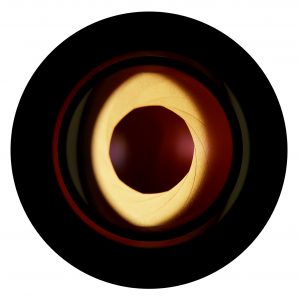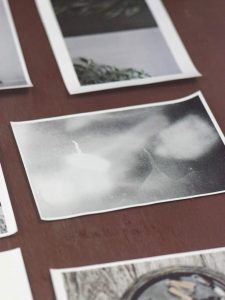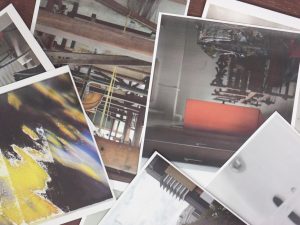CAA News Today
A Seminar Introduces a New Design Program in Bangkok
posted Sep 26, 2017
Since 2015, CAA’s International Committee has put out a call for papers on international topics in the visual arts to be published by CAA. Brian Curtain, an art historian and curator based in Bangkok, submitted the following article to Pearlie Rose S. Baluyut, a member of the International Committee. www.briancurtinbangkok.com

Piyatat Hemmatat, from the series 3rd Eye Trilogy: The New Dawn, 2013, C-print, artist proof, dimensions variable (artwork © Piyatat Hemmatat; photograph provided by the artist)
The Department of Communication Design (CommDe) of the Faculty of Architecture, Chulalongkorn University, Bangkok, will inaugurate a new MA program (CommMa) in 2018, to be led by Dr. Juthamas Tangsantikul, the current Deputy Director of CommDe. CommMa will be a practice-based research program with a focus on Southeast Asia. An introductory seminar and hands-on workshop, The Ghost in the Machine, was held on July 13, 2017, to present the program’s core methods and interests: the study of regional visual and material cultures as a means to explore questions of indigeneity and the critical potential of comparisons with other contexts. The seminar title evokes the relationship of animism and modernity—indeed, a colonial distinction. Participants conjured the local legacies of this relationship and also considered the metanarratives of politics, representation, and the fictive.

Participants’ works from Ghost in the Machine workshop (photograph by M. A. Trusler)
The featured speakers at the seminar, Dr. Clare Veal, MA Asian Art Histories lecturer at LaSalle College of the Arts in Singapore, and Thai photographer Piyatat Hemmatat share an interest in Walter Benjamin’s understanding of photography as an “optical unconscious,” which can capture and shape what can be thought but is normally beyond perception. Veal’s research on photographic histories and Hemmatat’s ethereal visions quite literally slow down our consumption of photography, the former by tracing varieties of meaning in what can be framed and the latter by providing expanses of detail.
Veal’s lecture moved beyond the paradigmatic examples of the infamous “Cottingley Fairies” photographs—early twentieth-century works displaying images of fairies that Sir Arthur Conan Doyle contended proved the existence of the supernatural—to an account of how desires and ideologies haunt colonial-era photography, including both landscape and figural representations. The context of Siam/Thailand allows for particular consideration of the performative aspects of photography. Photography was introduced in Siam by King Mongkut Rama IV (1851–1868), who thereby broke a longstanding taboo on visual representation of royalty outside idealized and conventionalized mural types. Veal deftly noted an exchange between the indexical and iconic with this introduction: in a word, a representation of something comes to stand for something. Here, the locating of a “Thai” tradition of cultural beliefs proves less compelling than the noting of shifting regulations of representation, ones that have become exceptionally aggressive in the recent years of military rule.

Participants’ works from Ghost in the Machine workshop (photograph by M. A. Trusler)
Participants’ works from Ghost in the Machine workshop (photograph by M. A. Trusler)
Hemmatat’s alchemical understanding of photography was complementary to Veal’s insights. His practice explores the deceptively illusionistic image in abstraction and representation as well as the suggestion that systems are at work within nature. While allowing for the captivating, seductive qualities of photography, his images are rooted in both the artist’s eye and experimental photographic techniques. The diversity of Hemmatat’s oeuvre suggests a restless inquisitiveness. He is currently making sculptures inspired by Hindu and Christian icons, dovetailing three-dimensional works with his longstanding engagement with photographs-as-objects.
Hemmatat presented objects for a mysterious cabinet of curiosities without telling the participants what they were: such things as volcanic Mayan glass, a camera lucida, and washi paper, a Japanese paper purported to last thousands of years. Inspired by the seemingly esoteric implications of these objects and Veal’s sharp critical guidance, participants then set out to take photographs in the immediate vicinity of the seminar. Images of graffiti, air vents, and architectural details were shaped with enigmatic auras, and subsequent group discussion debated the vagaries of perception and the relationship between the recognizable and the illegible as well as the concrete and the abstract.


